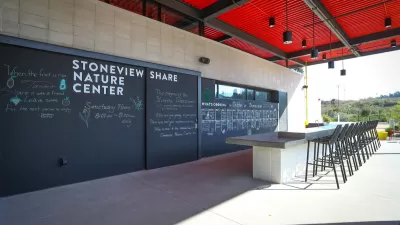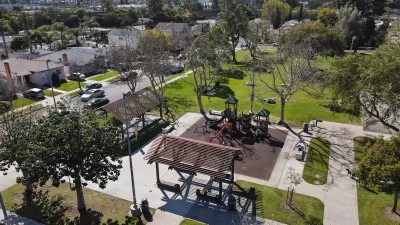Los Angeles County is working towards transforming underutilized land into a vibrant pocket park in the City Terrace neighborhood of East LA.

Park planning is a key function of the Los Angeles County Department of Parks and Recreation (DPR). DPR plans with equity and implementation in mind, ensuring that park plans prioritize the neediest communities and do not end up just sitting on bookshelves. Examples of such planning efforts include the Los Angeles Countywide Parks and Recreation Needs Assessment and Community Parks and Recreation Plans (CPRP) for underserved communities.
Each CPRP begins with an examination of local demographics, existing parks and recreational facilities, parkland gaps, recreation programs, tree canopy coverage, transportation and connectivity to parks, as well as availability of land for new parks. This baseline information, together with public input, informs a detailed assessment and prioritization of local park needs. This, in turn, guides the development of a green-space vision, conceptual designs of potential new park projects, and strategies and implementation actions to address the identified needs — with the overall goal of making the communities more sustainable through a variety of efforts that offer wide-reaching benefits and impacts.
As part of its ongoing efforts to implement the CPRPs, DPR has been working on the Folsom Street Pocket Park Planning Project in the City Terrace neighborhood of East Los Angeles with the goal of transforming a vacant lot into a vibrant public space. DPR has been seeking public input and collaborating with residents to ensure that the park meets local needs and desires. Environmental sustainability is a core focus, with plans for drought-tolerant landscaping and water-efficient designs to create a green space that enhances the quality of life for the surrounding neighborhood.
FULL STORY: Folsom Street Pocket Park Planning Project

Planetizen Federal Action Tracker
A weekly monitor of how Trump’s orders and actions are impacting planners and planning in America.

Congressman Proposes Bill to Rename DC Metro “Trump Train”
The Make Autorail Great Again Act would withhold federal funding to the system until the Washington Metropolitan Area Transit Authority (WMATA), rebrands as the Washington Metropolitan Authority for Greater Access (WMAGA).

The Simple Legislative Tool Transforming Vacant Downtowns
In California, Michigan and Georgia, an easy win is bringing dollars — and delight — back to city centers.

The States Losing Rural Delivery Rooms at an Alarming Pace
In some states, as few as 9% of rural hospitals still deliver babies. As a result, rising pre-term births, no adequate pre-term care and harrowing close calls are a growing reality.

The Small South Asian Republic Going all in on EVs
Thanks to one simple policy change less than five years ago, 65% of new cars in this Himalayan country are now electric.

DC Backpedals on Bike Lane Protection, Swaps Barriers for Paint
Citing aesthetic concerns, the city is removing the concrete barriers and flexposts that once separated Arizona Avenue cyclists from motor vehicles.
Urban Design for Planners 1: Software Tools
This six-course series explores essential urban design concepts using open source software and equips planners with the tools they need to participate fully in the urban design process.
Planning for Universal Design
Learn the tools for implementing Universal Design in planning regulations.
Smith Gee Studio
City of Charlotte
City of Camden Redevelopment Agency
City of Astoria
Transportation Research & Education Center (TREC) at Portland State University
US High Speed Rail Association
City of Camden Redevelopment Agency
Municipality of Princeton (NJ)





























